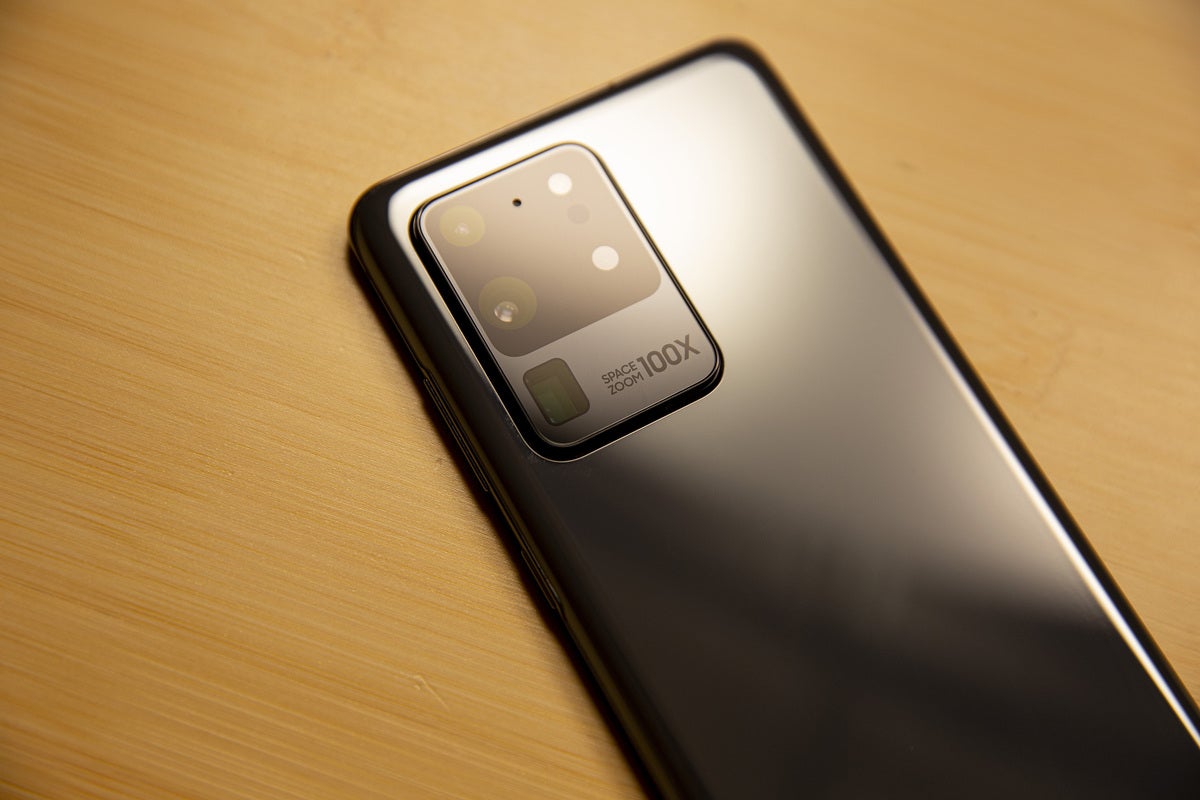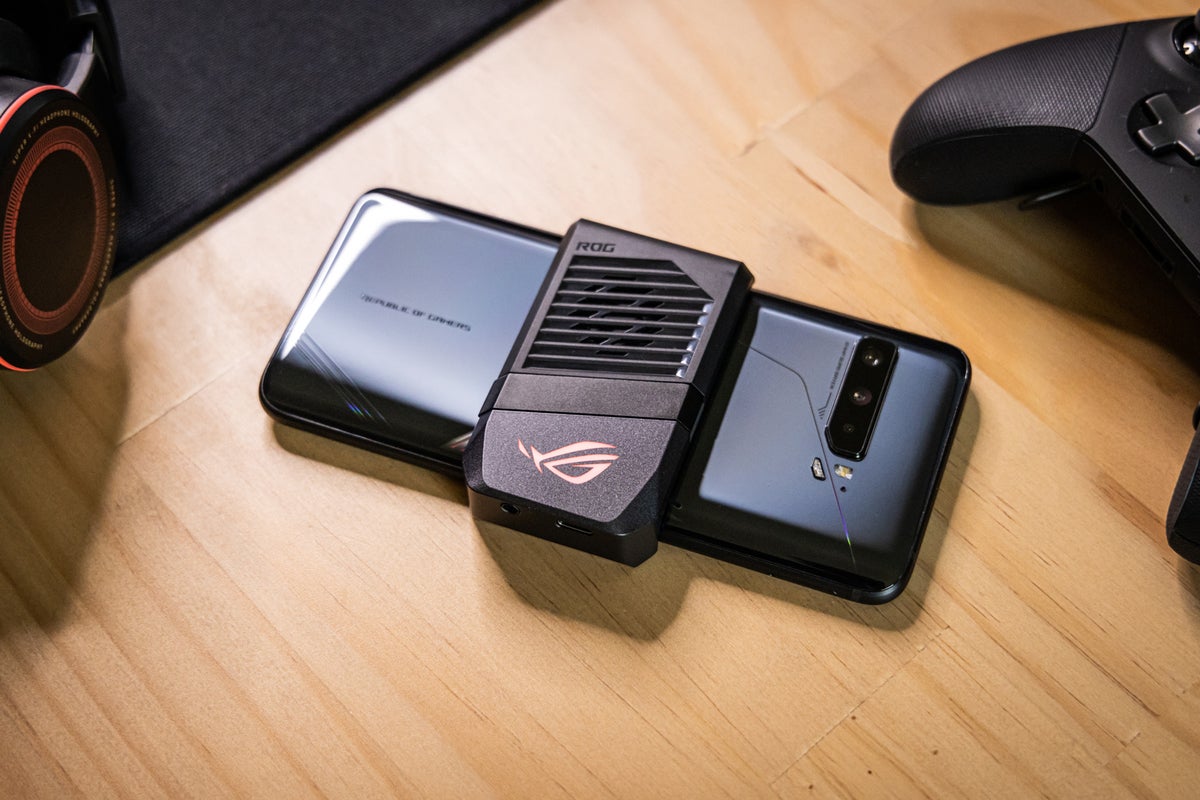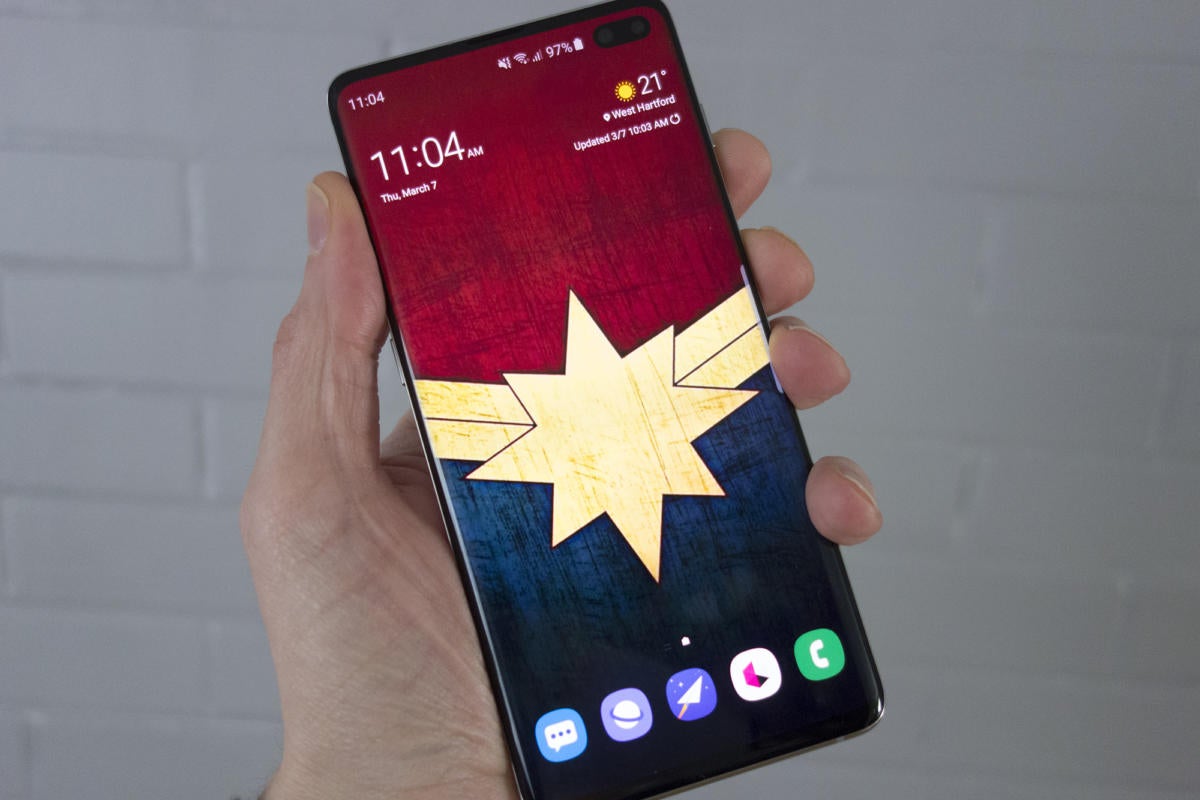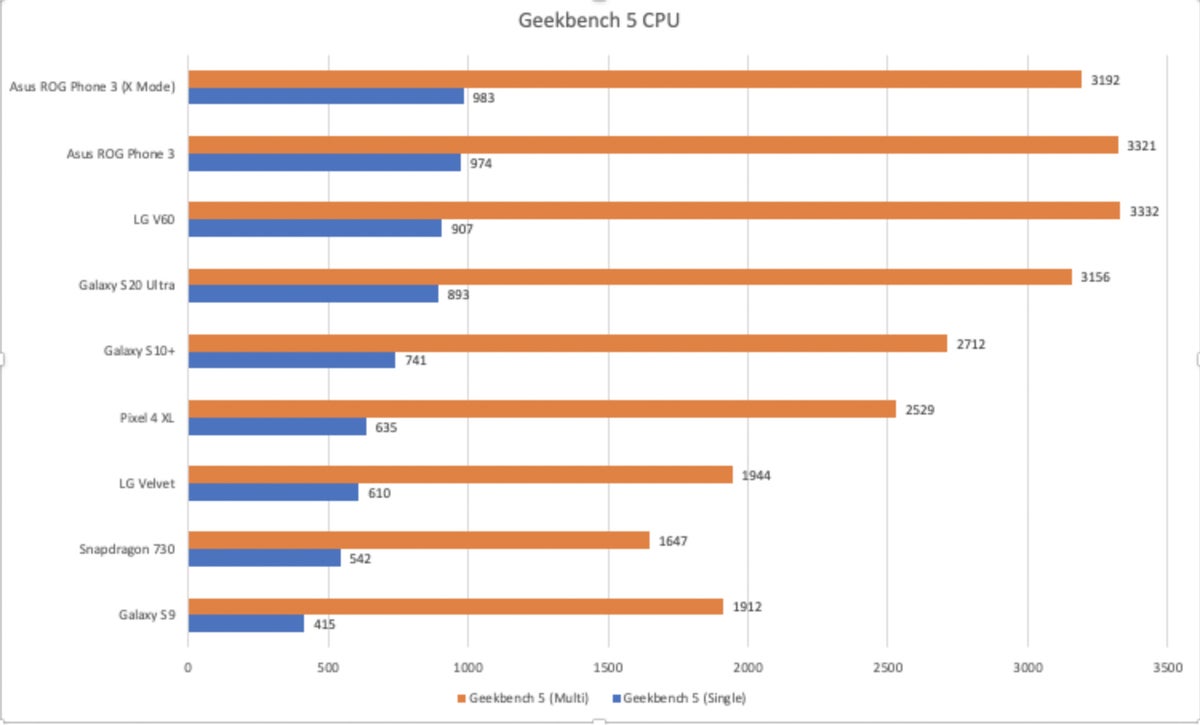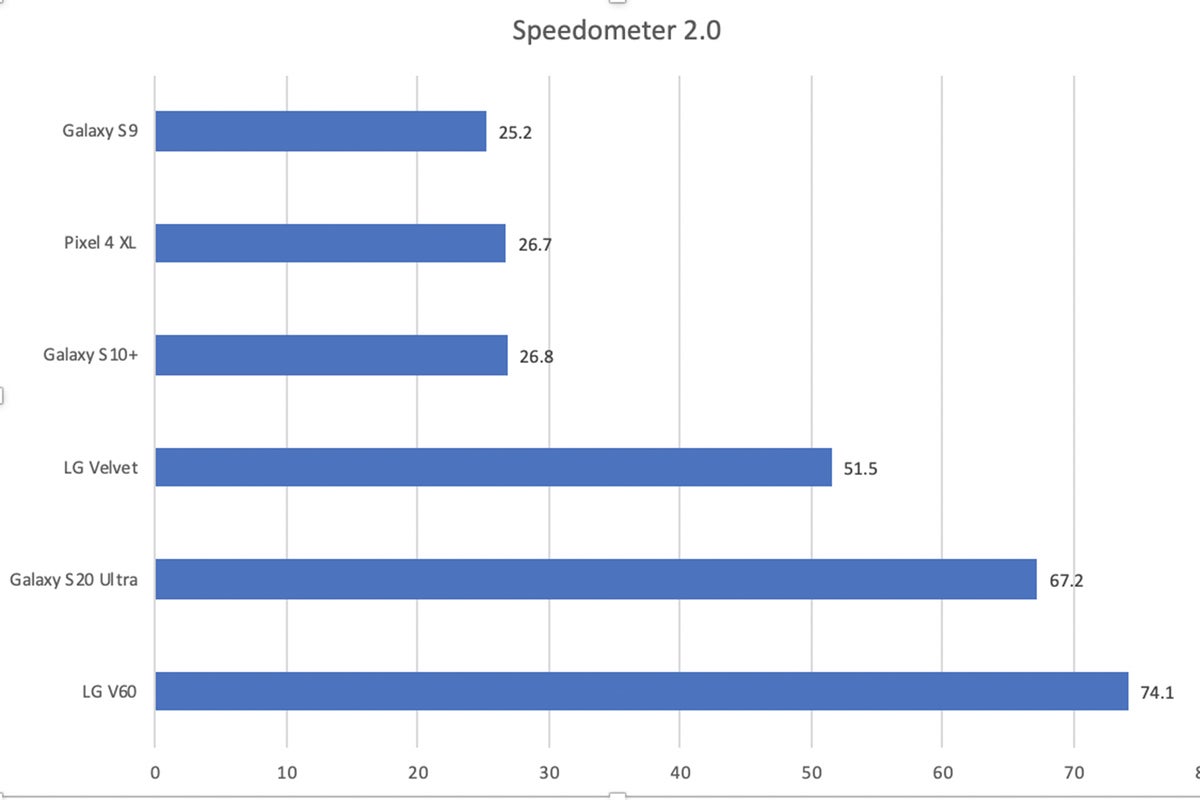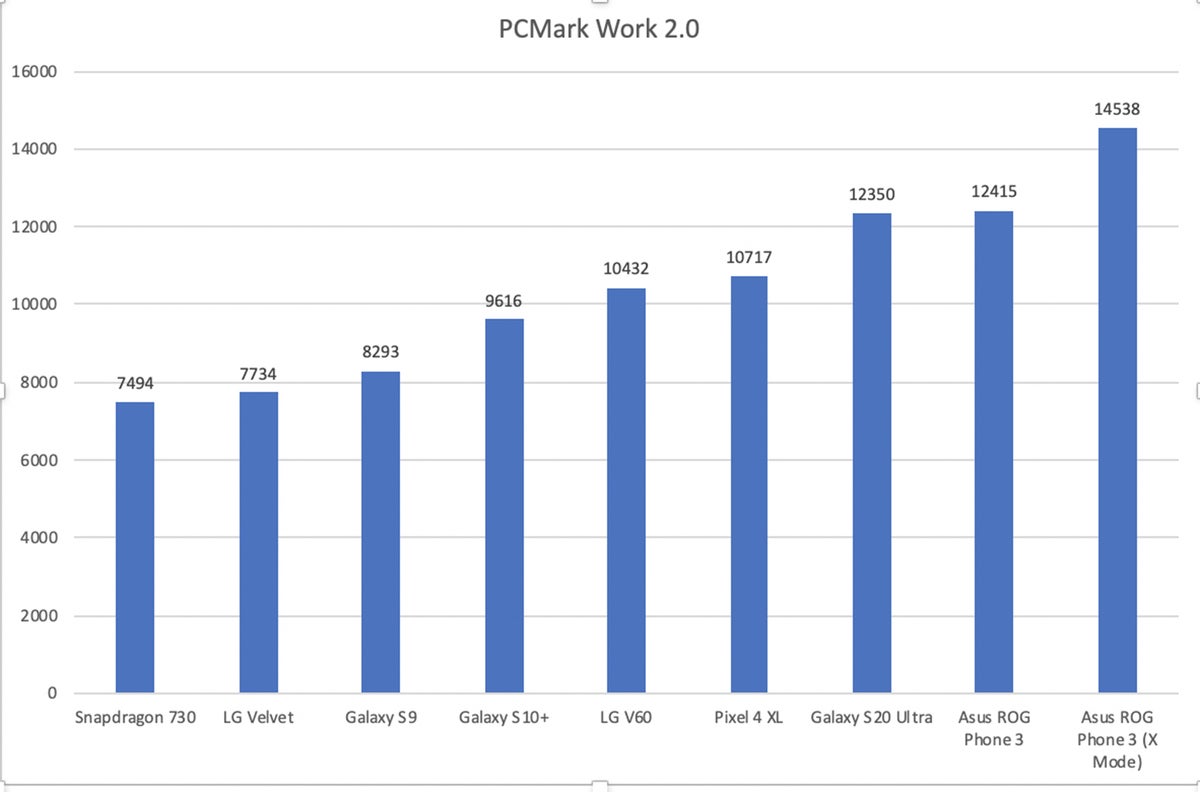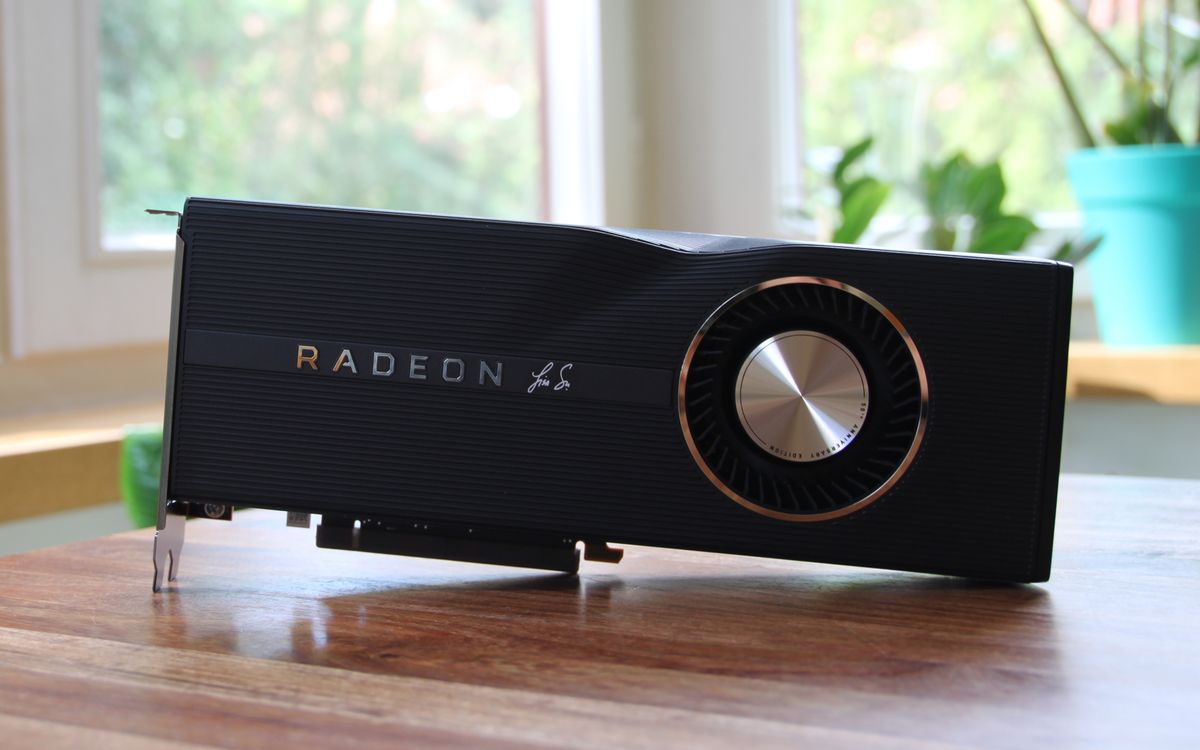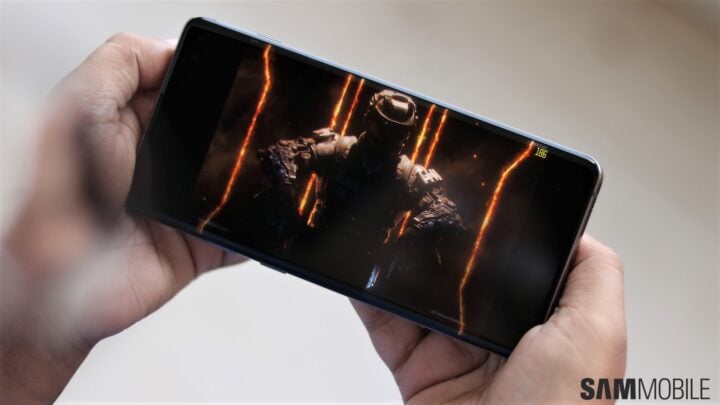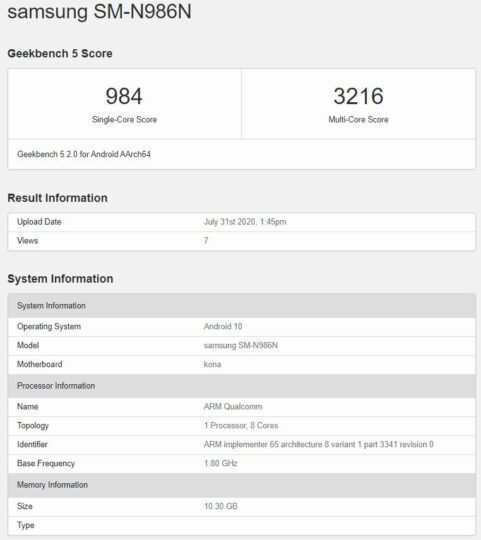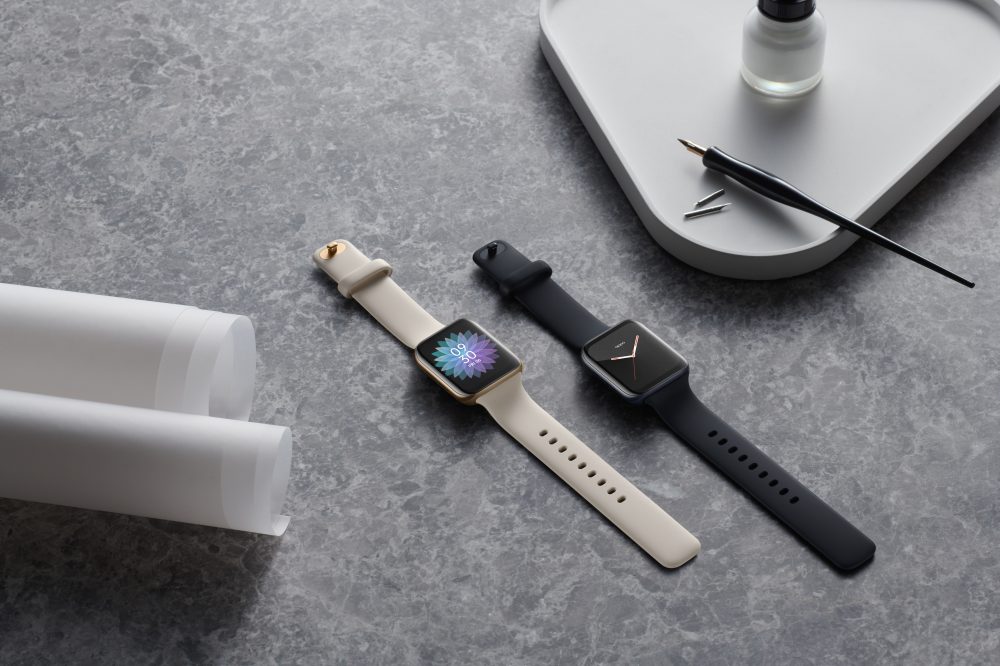proc.indah.link
MediaTek Inc. (OTCPK:MDTKF) Q2 2020 Earnings Conference Call July 31, 2020 4:00 AM ET
Company Participants
Jessie Wang - Deputy Director, Investor Relations
Rick Tsai - Chief Executive Officer
David Ku - Chief Financial Officer
Conference Call Participants
Randy Abrams - Credit Suisse
Gokul Hariharan - JPMorgan
Sebastian Hou - CLSA
Roland Shu - Citi Group
Charlie Chan - Morgan Stanley
Bruce Lu - Goldman Sachs
Brett Simpson - Arete Research
Operator
Welcome to the MediaTek 2020 Second Quarter Investors Conference Call. Financial results and presentations for today's call are available on the Investors section of the company website at www.mediatek.com.
Now, I would like to turn the call over to Ms. Jessie Wang, the Deputy Director of Investor Relations. Ms. Wang please go ahead.
Jessie Wang
Good afternoon everyone. Joining us today are Dr. Rick Tsai MediaTek's CEO; and Mr. David Ku, MediaTek's CFO. Mr. Ku will report our second quarter results and then Dr. Tsai will provide our prepared remarks. After that we will open for Q&A.
As a reminder, today's presentation will provide forward-looking statements based on our current expectations. These statements are subject to various risks and factors which may cause actual results to materially different from the statements.
The presentation material supplement non-TIFRS financial measures. Earnings distribution will be made in accordance with financial statements based on TIFRS. For details please refer to the Safe Harbor statement in our presentation slides.
In addition all content provided in this teleconference are for your reference only not intended for investment advice. Neither MediaTek nor any of independent providers is responsible for any actions taken in reliance on content provided in today's call.
Now, I would like to turn the call to our CFO Mr. David Ku for the second quarter financial results.
David Ku
Thank you, Jessie and good afternoon everyone. Now, let's start with the 2020 second quarter financial results. The currency here is in NT dollar. Revenue for the quarter was NT$67.6 billion, up 11.1% sequentially and up 9.8% year-over-year. Gross margin of the quarter was 43.5%, up 0.4 percentage points sequentially and up 1.6 percentage points year-over-year.
Operating expense for the quarter were NT$22 billion compared with NT$20.4 billion in the previous quarter and NT$19.6 million in the same period last year. Operating income for the quarter was NT$7.4 billion, up 27.8% sequentially and up 20.7% year-over-year. Non-TIFRS operating income for the quarter was NT$8 billion.
Operating margin for the quarter was 11%, increased 1.5 percentage points from the previous quarter and increased one percentage point from the year ago quarter. Non-TIFRS operating margin for the quarter was 11.9%.
Net income for the quarter was NT$7.3 billion, up 25.9% sequentially and up 12.4% year-over-year. Non-TIFRS net income for the quarter was NT$7.8 billion. Net margin for the quarter was 10.8%, increased 1.3 percentage points from the previous quarter and increased 0.2 percentage points from the year ago quarter. Non-TIFRS net profit margin for the quarter was 11.6%.
EPS for the quarter was NT$4.58, up from NT$3.64 in the previous quarter and up from NT$4.11 in the same quarter last year. Non-TIFRS EPS for the quarter was NT$4.92. A reconciliation table for our TIFRS and non-TIFRS financial measurement is attached in our press release for your information.
And that concludes my comments. Thank you.
Jessie Wang
Thank you, David. And now, I would like to turn the call to CEO, Dr. Rick Tsai for prepared remarks.
Rick Tsai
Good afternoon everyone. Today, I'm pleased to report our solid second quarter results. Revenue came in above expectations and operating profit margin increased to 11%, the highest level since the fourth quarter of 2015. In addition, our operating income in the first half of the year grew more than 40% year-over-year, delivering significant operating leverage. On the business side, we saw healthy demand across multiple markets during the second quarter, especially rose in our growth area.
Now let me elaborate on our three businesses for our second quarter results. Starting with growth area today, which consists of AIoT, PMIC and ASIC accounted for 28% to 33% of second quarter revenue. We saw exposure to multiple growing trends. Growth area remains robust during this challenging time. Revenues for this group were better than expected in the second quarter especially WiFi and Power PC -- Power IT.
First of all, increasing bandwidth demand in this new environment, demands a new era of ultra-fast connectivity. This is driving our WiFi business upward. MediaTek is one of the few industry leaders shipping WiFi chips with large volume in the first year of the market take off. By now, MediaTek WiFi solutions are already in a wide range of applications across broadband router and consumer electronics. We believe this is just the beginning of a multiyear connectivity upgrade cycle.
Work from home and remote learning trends create near-term momentum for router upgrades. Mainland China's [Indiscernible] infrastructure investment further accelerates WiFi six adoption in broadband. We target to ship several millions of WiFi six chipset this year and believe its contribution will continue to increase in coming years. Power management ICs was another product with robust growth in the second quarter, driven by notebook, Chromebook and 5G base stations.
Looking into the second half of 2020, apart from healthy PC and 5G base station demand, we are seeing growing contribution from 5G smartphones, fast charging solutions and gaming consoles. For ASIC, consumer ASIC chips for gaming consoles have started multiyear product cycle. Demand is strong in the third quarter ahead of the year-end holiday season.
On the enterprise side, our cloud AI project is on track to commence volume production in the second half of 2020. In addition, we recently announced our first Retimer PHY product, a companion chip to our Switch ASIC for data center and 5G infrastructure. The product expansion would add our platform competitiveness in enterprise market.
Next smart home and others, primarily TV and other traditional main electronics accounted for 20% to 25% of revenue in the second quarter. After a slowdown in the second quarter global TV demand rebounded rapidly in the third quarter mainly led by North American and European markets. As the main home entertainment device, TV especially smaller-sized ones for bedrooms are becoming popular during the longer staying home period. Other traditional consumer electronics also recovered gradually.
Now on to mobile computing, which includes smartphone and tablets accounted for 43% to 48% of the second quarter revenue. Mobile computing grew strongly in the second quarter driven by numerous 5G smartphone launches and demand search in tablets and Chromebooks for remote learning. We expect those momentum to carry on into the third quarter.
The 5G market is tracking well. We continue to believe the global 5G smartphone shipment in 2020 will be $170 million to $200 million more likely towards the high end. It will likely to be more than double in 2021. MediaTek is well positioned in global 5G cycle. With the recent introduction of Dimensity 720 for the mass market MediaTek has covered all smartphone segments in just three quarters including high end Dimensity 1000 in the fourth quarter of 2019 and mid-range Dimensity 800 series in the second quarter this year.
Dimensity series SoCs are highly valued by our customers. All major Chinese smartphone brands are shipping MediaTek powered 5G smartphones by now and there is a strong design in pipeline for models in second half of 2020. Very importantly, our 5G smartphone shipment to regions beyond Mainland China will start in the third quarter. Besides our 5G SIM modem business is progressing well. First project for Intel platform notebook PC is on schedule to mass produce in the first half of 2021.
On the technology side, MediaTek lease industry in supporting 5G dual SIM, dual standby and two carrier aggregation with excellent power performance for mid to high end smartphone. Those features further enhance MediaTek already highly competitive position in the increasingly popular sub-6 gigahertz market. Apart from sub-6 gigahertz, MediaTek millimeter wave product development is on schedule. We expect millimeter wave technology to be ready by the end of the year and customer samples to be available in 2021.
For 4G, market demand stays stable lately. With market share gains, we believe we are able to outperform the market this year. In the first half of 2020, our total revenue grew more than 12% and with good operating leverage. This growth momentum will be conservatively stronger in the second half in most of our businesses.
With our diversified product portfolio and continued investment in technologies, 2020 not only provides healthy top line and bottom line growth but also lays out a solid foundation for our midterm growth. In particular, technology investment efforts we made in the past few years are starting to bear fruits evidenced by our early participation and stronger market position in both global 5G and WiFi six markets. We are seeing great opportunities ahead with business progressing well on multiple fronts. As always, we will continue to execute and explore future market potential.
Now turning to third quarter outlook. Consumer electronics demand is picking up across the board. Work from home-related demand and several customer product launches such as 5G smartphones and game consoles have sales momentum into the third quarter. We expect all major product lines to grow strongly. 5G smartphones in particular will benefit from mass market models launches and ramp throughout the year.
Gross margin is expected to be stable at the current range. We expect third quarter revenue to be in the range of NT$82.5 billion to NT$87.9 billion up 22% to 30% sequentially and up 23% to 31% year-over-year at a forecasted exchange rate of TWD29.2 to $1. We are forecasting gross margin at 43% plus or minus 1.5 percentage points. And quarterly operating expense ratio to be at 29% plus or minus two percentage points. With that we expect to see another quarter of healthy operating leverage in the third quarter.
That concludes my prepared remarks. Thank you.
Jessie Wang
Thank you, Rick. We are now ready for Q&A. May we have -- may we please have the first question operator?
Question-and-Answer Session
Operator
Yes, thank you. We are now in question-and-answer session. [Operator Instructions] The first to ask questions Randy Abrams, Credit Suisse. Please ask your questions.
Randy Abrams
Okay, yes, thank you and congratulations on the good results and outlook. Actually the first question on the outlook. With the 22% to 30% growth, could you outline it by segment the relative momentum? And could you also indicate if you're seeing any incremental benefits already from some of the restrictions where you have opportunity to support that customer if they can't get their own silicon.
Rick Tsai
So for the third quarter, actually all the businesses are growing well. As I explained in the remarks, in all our business we see a good, robust growth. And we are very pleased with that. And we are see -- and this is despite really shall we say outside impact. These results we are -- actually we have been forecasting internally through the past quarter already. Thank you.
Randy Abrams
Yes. If I could follow maybe just beyond that, if you see potential looking past -- because it's well above seasonal third quarter the initial view looking past if you could start to see some benefit and also 5G ramping up if -- even though we're seeing a better seasonal the growth could actually continue into year-end just factoring 5G ramp and maybe potential new customer, new projects from the restriction.
David Ku
Randy, it's David here. I think the 5G as the CEO explained is definitely one of the growth driver. But I think the key for our third quarter revenue is really just -- we see a pretty even and all pretty strong growth across all three sectors, which is basically mobile computing, the growth factor, and also the small exposure [ph]. Yes, but as we explained earlier 5G is definitely the growth driver.
Randy Abrams
Okay. And would I -- I guess what I was asking is more for the follow-on fourth quarter like it's well above seasonal and good strong growth. But then that's even before probably much benefit from incremental -- so if the system company can't get their own silicon. So I was just curious if you have potential, it looks like the strength continues into year-end factoring you could have further share gain and further 5G ramp?
David Ku
I think in the fourth quarter we probably -- we need to wait until maybe for next quarter. But in general, I guess to answer your question is we do see a pretty even demand coming out from all three major business sector. For mobile computing especially I guess both for 5G and 4G, we see -- 5G definitely is very strong as we explained earlier. We now further expand our product segmentation into the mainstream and also the end level as well. That certainly helped.
But by saying that I think towards the year-end also we have a new high-end product coming out as well. So truly the best way to think about that is really just a comprehensive product segmentation expansion not just on the mainstream. And for 4G this year even though overall the global market is actually coming down, but many thanks to the market share again we see a pretty decent growth as well for this year.
Randy Abrams
Okay. And the last question, if I could ask on the data center business. If you could give an updated profile between the data center switch and now this new product you've announced. How has these ramp-up you could see the revenue contribution like as it goes toward low single or if it could get to be mid-single? And maybe just the outlook for this segment if you're kind of sizing up the TAM again, how you see the potential in data center?
Rick Tsai
Well, you are asking data center in particular, I think data center ASIC 10 is about $0.5 billion. But we are working in what we call...
David Ku
Enterprise.
Rick Tsai
Enterprise ASIC area, which comprised of data center network and infrastructure 5G infrastructure, altogether about $2 billion in TAM. Right now we have a good design and we have tape out. We have engineering samples the production is beginning to ramp-up this year. But this model takes time to deliver -- developed into a major revenue -- as a major revenue source. So we're being patient. We are putting in still the resources into the process technology the key IT, such as the high-speed service. I believe we're going to win multiple design, and it will provide a solid stable revenue in the next couple of years. Thank you.
Randy Abrams
Okay. Thank you.
Operator
Next we are having Gokul Hariharan from JPMorgan. Go ahead, please.
Gokul Hariharan
Yes. Hi. Congrats on the great results. First question I had could you talk a little bit about, I think, you did revise up you have 5G expectations and you're also expecting more than 2x growth in 2021. How should we think about MediaTek 5G market share as we are now getting into mainstream as well as probably a little bit more entry-level kind of price points for 5G mass market phones? What are we thinking about market share situation for 5G?
And secondly, how should we think about pricing for 5G now that we have a little bit more visibility? I think previously you have said until the end of this year you're seeing that the roughly 2x or more premium that you have to 4G value sustain. Could be talking a little bit longer term if 5G pricing is still going to remain on a like-for-like basis at a significant premium to 4G as we look into next year more mass market models as well? Thank you.
Rick Tsai
It's a long question. Let me see if I get your point. First, I think our 5G performance in market of to now is pretty good. I think all our three SoCs in three different segments are being designing well with our various customers. We expect the -- I think you asked the market share. Let me see we believe, we probably quantity-wise above 40% by the end of the year, above 40% of the market share quantity-wise. What else?
David Ku
I guess, the major question.
Rick Tsai
I hope I'm answering your question.
Gokul Hariharan
Yes, I think that's good. Do we think that 40-plus percent market share sustain into next year also? And maybe could you talk a little bit about 5G pricing versus 4G on the same segment? Are we going to sustain the price premium that we currently enjoy how long can we sustain that price premium?
Rick Tsai
I think into 2021, of course, we still -- quite a bit of time to see. But we should be able to hold on to our market share, hopefully, we can do better. Pricing-wise I think we have elaborated before 5G SoC is being quite a bit more complicated than 4G SoCs does command -- how much?
David Ku
We're talking about multiple times.
Rick Tsai
Multiple times of 4G SoC price. That trend definitely is continuing. Thank you.
Gokul Hariharan
Okay. Thank you.
Operator
Now we're taking questions from Sebastian Hou, CLSA.
Sebastian Hou
Hi. Good afternoon. Thank you gentlemen for taking my questions. My first question is the product road map for next year. So I know that we already have Dimensity 1000 this is for the high-end 5G SoC and a high-end model for your customers. But can you give us some update on your plan about the next year whether or not we will have more high-end one for the ultra-premium flagship model for our customers? And when do you expect that to come in? And what kind of the process technology would you utilize? Thank you.
Rick Tsai
We announced Dimensity 1000 chip near the end of the last year. So I think one year is about the time that we will take to make our announcement for next high-end SoC the name to be decided. Of course, we will as we said at almost at the very beginning of the 5G era we start the -- we definitely want to be leading all segments from high-end to mid-end to the mass volume segment.
We continue to abide by that statement. So for the -- I'm sure we will have more high-end SoCs after the announcement at the end of this year. And for the high-end chips, we basically will we were using TSMCs leading-edge processes. I think we are -- we used 7-nanometer for the 1000. We continue to use 7-nanometer and 6-nanometer for the last couple of ships but we will move into 5-nanometer as soon as we can. Thank you.
Sebastian Hou
Got it. That's clear. My second question is I think the -- maybe this is for David. I think we have heard you guys talk about emphasizing the operating leverage for a long time and you've done a good job to direct investors you not focused not on the gross margin but on op margin. Since now we are in the very good position in the up cycle and the 5G still profit-accretive and the growth business also very profitable when do you expect that we could reach the return to 20% op margin again? Is that a dream? Or is that a achievable target in the next three years? Thank you.
David Ku
For the longer-term forecast, we probably would not be able to comment on right now. But as you can see actions starting from in Q1 this year I think the Q1 operating margin was 9.5% and Q2 was 11%; Q3 definitely we're going to continue to see that improving. And as we explained to the community up and leveraging as something that we're driving pretty seriously.
I think trend-wise I think we feel comfortable, but in terms of pace and also magnitude I think that would be still need to watch a lot of different cases putting together, I guess, we probably will not be able to commenting on that. We don't have the visibility to make long story short. But I think trend-wise direction-wise I think that's a direction we're working diligently.
Sebastian Hou
Got it. Last for me very quick one is I think that we continue to accumulate a lot of the cash in hand, I know that we continue to be very -- do a lot of strategic inventory investment, but what about the cash return to shareholder strategies? Would you consider increase -- potentially increase the dividend or any other sort of the cash return policy? Thank you.
David Ku
Well I think in the past few years the overall dividend or cash dividend payout ratio is roughly close to 70%. I think that was defined by the Board. I think we will -- every year, we will definitely discuss with our ore and design the dividend policy. But for the time being the overall policy is still trying to maintain a balanced stable payout ratio. So basically, the EPS earnings increase I think the absolute dollar will increase. But in terms of the payout ratio, I think we need to discuss with our Board later this year or early next year in order to - back to your question. But overall, I guess if you look at the dollar side, we pay out every year to the shareholder I think it's actually pretty sizable, pretty sizeable.
Sebastian Hou
Got it. Thank you.
Operator
Next to ask question Roland Shu from Citi Group. Go ahead please.
Roland Shu
Hi, good afternoon and congrats for the results. So looking at your mobile revenue have been increased meaningfully Y-o-Y in first half. I would like to know how much did this 5G contribute to your mobile revenue in first half.
Rick Tsai
I think Roland I think for the first half the 5G's contribute I would say less than 10% of the overall revenue if you consider the Q1 and Q2 for the whole country perspective.
Roland Shu
Okay. Less than 10% for the whole company?
Rick Tsai
Yes I would say close to 10%. Yes.
Roland Shu
The whole company or for the whole mobile revenue?
Rick Tsai
The whole company, whole company.
Roland Shu
Okay. Less than 10% of the whole company. And also for your four G you said you continue to 4G market share. So for what kind of product or segment you are growing your market share? Is this on the CDOP 8090 or G90 or lease in market share gain is coming from a lower end product?
Rick Tsai
Roland I would say we're doing well across the board from G90 all the way to -- excuse me, I forgot the numbers. But basically across the board we're -- I think we're getting good design. And those designs will continue into 2021 also.
So we remain I would say comfortable with our 4G business this year. And we expect still for as we said also before is the long-lasting -- has the long-lasting tail. We believe in the next year couple or three years. And we intend to continue our market share performance and that will also provide us with really good revenue and operating profits.
Roland Shu
Understood. Yes. And last time you said your 4G total shipment this year would be similar as last year. So do you still hold your view on that?
Rick Tsai
Yes, we do. We do.
Roland Shu
Okay. Then and -- I think Rick, you said 4G will be a very good long term for next several years. So you still expect the total wireline will continue to grow going forward?
Rick Tsai
No. We won’t say that because obviously 5G will take up the share going forward. As I said in my opening remarks we expect 5G volume to more than double next year compared to this year. With the 1.3 billion roughly units a year. Even with 5G's penetration we still see a strong demand for 4G, especially outside of China Mainland China. But I think that will be -- this trend will be somewhat different from the 3G era. Thank you.
Roland Shu
Thank you. Yes. And for your 5G shipment, the whole year your number 170 million to 200 million are still unchanged. How about for the shipment in China? I think the last time you talked about 100 million to 120 million. And I think in your opening remarks that you did not mention this. So what's your view for the shipment in China this year?
Rick Tsai
We changed that view. 100 million to 120 million shipment in China.
Roland Shu
$100 million to -- but when we look at the China 5G penetration, second quarter had reached close to 50%. Even in June it was more than 60%. So is this a high penetration in China in your number of NT$100 million to NT$120 million shipment this year? Or your number actually is looking for even higher penetration in China this year?
Rick Tsai
No I think if I remember correctly the first half China's 5G smartphone shipment sell-through was NT$40 million-plus. I forgot exact number NT$42 million or something.
Roland Shu
Yes. NT$13.5 million yes.
Rick Tsai
No that's for second quarter. I'm talking about first half.
Roland Shu
Yes. Okay. Yes.
Rick Tsai
Yes, first half. So we're looking at -- NT$100 million to NT$120 million which will represent NT$60 million to NT$80 million kind of up to double the first half numbers. We feel that's a reasonable forecast from our view.
Roland Shu
Okay. Yes. So still stick with your view. By the way I actually I believe in second quarter China 5G smartphone shipment is close to NT$50 million 50. And then plus first quarter I think that probably the first half is already above NT$50 million…
Rick Tsai
I think you need to look at -- there's a sell in and sell-out. We're talking about sell-out. The sell-in number -- there's about NT$10 million difference between sell-in and sell-out.
Roland Shu
Okay. So your number is a sell-out number, right?
Rick Tsai
Sell-out, yes.
Roland Shu
And probably because to the high-end?
David Ku
I think first half is high-end and also the mainstream as well.
Roland Shu
Okay. Understood. Okay. Thank you. My last question right now. Now you are seeing increasing demand on both 5G and the 4G SoC. Do you get enough support from your foundry and wholesale partners to make up these products to meet this increasing demand? Thank you.
Rick Tsai
Let me put this way, we work very hard, but also very closely with our foundry supplier. We're getting support from leading edge processes to 8-inch mature processes and fabs. So of that I don't see major issues. But we're -- it's taking a lot of effort but we're making our commitment to our customers.
Roland Shu
Okay. So how do you think about the foundry's pricing then? Will it be a headwind to your gross margin going forward?
Rick Tsai
We don't read issues for this year. We figure out next year.
Roland Shu
Okay. Thank you. And congrats. Thank you.
Rick Tsai
Thank you.
Operator
Next, we're taking questions from Charlie Chan from Morgan Stanley.
Charlie Chan
Hi, Rick. Hi, David. So my first question is about your gross margin trend because I remember you took about 5G margin should be better than 4G and that our TV so you mentioned seems to be increasing. So why do you think gross margin in third quarter is only flat? Do you see any upside there?
David Ku
Charlie, it's David here. I think for the gross margin, basically every quarter we really need to see the mix between the business units and also the product mix and also the customer mix. So, probably the better way to think about the gross margin is really just like we said earlier, this year the gross margin will stabilize within the range basically back to when the rent we provide was 42% 43%.
Now, consider everything for Q2 it was 43.5%. And for Q3 the guidance we give out was 43% plus/minus 1.5%. I guess we still believe, while we're trying to rent our 5G and also maybe the -- also 4G as well. The overall smartphone revenue contribution will be higher in Q3 and Q4. But at least, we still believe we can stabilize the gross margins within that range.
Charlie Chan
Okay. Thank you. My next question is about how you’re going to manage this U.S. policy risk. So it is great to see Mr. Patrick Wilson joined the management team. So, what's the intelligence from the gentlemen or from your team about whether your competitor will get licensed or high silicon or to get approval to sell their merchant ship to Huawei? Because I think there's an important assumption for your 5G SoC market share in 2021. Can you give us some color? Thank you.
Rick Tsai
We did announce having Patrick as our VP of Government Affairs in the U.S., mainly because MediaTek being, I would say, a very important and also a global semiconductor company. We need to be able to participate, and if needed influence in the dialogue and the discussion among major semiconductor companies. And Mr. Wilson will -- being station in Washington D.C. we’d lead that effort locally. I'm sure you understand how that works.
And so far, we have really good -- even just within a week, we have good really experience with Patrick. But the question you ask, I think is beyond his job description. We our main purpose is really to again to help MediaTek participate in the discussion and to influence, if necessary, for the -- a big part of the industry. And I'm sure Patrick will also establish MediaTek presence in a very positive way. Thank you.
Charlie Chan
Got it. And -- so, with those kind of assumption, are you confident that your market share in SoC, I mean, your market share in China can exceed 50% in 2021?
David Ku
So Charlie we probably will not be able to comment for next year's market share right now. Yes. It early -- some time ago.
Charlie Chan
Okay. And quick one is about the end demand, right? I mean, coming to said that consumer demand is recovering. But if you look at pandemic outside of China, I think, it's still pretty tough. So I said, the company is a strong performers. What's your observation about the smartphone demand outside of China especially India or Africa markets and whether that could be a potential risk for your second half outlook? Thank you.
Rick Tsai
I think Charlie to the smartphones we are not -- I don't think we're being naive about the demand, the overall demand picture we have set and we remain that way at the global smartphone unit shipment will decline by 10% to 15%, and most of which of course will follow 4G smartphones.
However, and we also said, we have gained market share in a significant way. So our shipment in the 4G remains about the same, hopefully, a little better than last year. And 5G at the beginning you know that we are participating -- the critical thing really is the -- out of our investment and our determination in our technology and product portfolio and our execution.
We have demonstrated that to our customers most of our key customers that we can provide them with the portfolio products with the right technologies content that can make them successful in the market. So we're getting the design and we're getting our share of the business. So that's how it works. We're not overlooking the potential impact average impact from the pandemic at all.
Charlie Chan
Okay. Thanks. Thank you.
Operator
Next, one we are having Bruce Lu from Goldman Sachs. Go ahead, please.
Bruce Lu
Hi. Thank you for taking my question. A very good result and guidance. So I want to dig in more a little bit on that 4G penetration where we will remain high for multiple years. I think as management mentioned 5G shipment will be more than double next year i.e. the penetration where we will be close to 40%. And if 4G is going to be like high penetration even in 2022, 2023 which means that the growth rate for 5G will be much, much slower in 2022 onwards. Is that a way -- right way think about it? Hello?
David Ku
Hey, Bruce. I think maybe this -- we were not clear about that. I think when we talked about the 4G, we're mainly talking about for this year. But for going forward, for next year like the CEO explained, the overall demand on 5G or next year 5G shipments -- not shipment the 5G demand should be double, which means the 4G overall shipment from an addressable market perspective will come down.
But overall, just from the ASP profile perspective, as long as we can remain the meaningful market for 5G that actually is a change for us we call the market product migration or relevant cannibalization. So, we talk about 4G for this year. For next year it really depends on the 4G. 5G product mix. So. we didn't referring to 4G next year the shipment will continue to grow on the MediaTek side that's not what we're referring to.
Bruce Lu
No, no. I'm not talking about MediaTek's 4G smartphone shipment next year. I thought that management was talking about 4G penetration or 4G overall market will remain at higher -- or relative high penetration rate in market years.
Jessie Wang
I think you should say it's a long-tail business.
David Ku
Yes, I think Bruce it's a long-tail business. And also 4G because as you can see in the past, we still have a little bit 2G or even 3G smartphone. But now we will see less and less 2G and 3G smartphone, we see a lot of 4G smartphone and also signing front this year with the 5G smartphone.
So, when we talk about 4G as long-tail business, we do believe going forward lots of people from the emerging market will stay at 4G. But for certain areas, we'll migrate to 5G. So, that's what we mean by the 4G penetration will continue to increase. That doesn't remain the shipment -- absolute shipments to be precise.
Bruce Lu
I think the key question I try to ask is that MediaTek is going to reach about NT$10 billion revenue pretty, pretty soon. I mean beyond that what is the main growth driver for the investor? Where is the big enough addressable market the key growth driver which can move the whole market? The company has extremely high exposure to smartphone in the coming years. I think most likely once China 5G smartphone shipment penetration which saturation point, your smartphone revenue can be more than 60%, 70% of the total revenue.
And your revenue exposure to China is extremely high at that moment. So, what kind of product or what kind of customer revenue exposure or the growth we can expect in a multiyear time frame? And what's your intention to do more aggressive M&A for like different customer profile or different product lines? I think that's something I try to ask.
Rick Tsai
Well, this is -- Bruce this is a very dynamic time. The 5G certainly the thing will provide a strong growth outlook for several years to come. And the MediaTek as you probably can tell it's been -- we were taking advantage of that growth by being early in the cycle.
However, the other thing we have talked about multiple times is this time at this cycle, we are not just focusing on 5G smartphone in China only. I think I said in my remarks that starting in the third quarter, we will start shipping 5G smartphone to markets outside of mainland China, we are working very hard to have design into the markets such as North America and Europe next year later -- later this year and next year and beyond.
In addition, we also put a lot of work in the -- what we call the modem business where the first being the data card with the Intel chips powered notebook PCs. We also are working on the CPE using our SIM modem capability. We believe this will provide definitely extra and the stable business for our modem development effort and investment.
Of course, we are not sitting here working on 5G modem. We -- our business in our growth areas has done well has been doing well. We'll continue doing well. And this year as we said during our second quarter or third quarter business, the growth area is doing from a growth rate point of view is doing very well. We are our WiFi business, our business into the tablets and the chrome books. Really we are very pleased with the advancement we're making over there. We definitely expect -- because this and this new normal I don't know what that is really. But one thing we're sure is people either at home or in the office will demand much better equipment from computing and from connectivity point of view and not to mention the good display and these all fit into MediaTek strength.
We have been investing in these technologies all along. We have the products to meet this surge in demand we continue -- we believe we will continue to benefit because this -- I'll say this trend is -- it's a continuing trend. It's not a onetime short-term type of thing. So yes, we understand the situation that we are growing well this year moving into good revenue -- strong revenue this year. We're working hard so that we can continue hopefully our growth trend in the last couple or three years. Thank you.
Bruce Lu
Okay. Thank you.
Operator
Next we'll take questions from Brett Simpson, Arete Research.
Brett Simpson
Yes. Thanks very much. A question for Rick. I think you touched on some of this earlier but the foundry situation at the moment is incredibly tight particularly at 7-nanometer or particularly for PMICs at the moment. Are you seeing any real challenges delivering sort of upside in Q3 from a supply perspective? And when you look out to Q4, will there be access to more supply? Will you be able to ramp-up further? Or is there going to be some challenges also in Q4 with tightness out there? Thank you.
Rick Tsai
It is tight. I said earlier, both from a leading-edge process and the 8-inch mature processes. Again, we have been -- we did see this earlier. And since, I think, late last year we started to work on the PMIC capacity, for instance. We move our products into different fabs from our various suppliers.
I don't want to tell you how many facts we're in, quite a few, quite a few. And that's how we managed to meet the requirements of our 5G shipments or 4G shipments, tablet shipment or Chromebook shipments. It's a very tough situation but our supply chain guys have done a tremendous job in the meeting the customers' demand.
Leading edge, we worked really closely with our neighbor here, both from a technology point of view and the capacity support point of view. We see media attack very different from several years ago. We are now moving into a leading-edge processes. As fast as we can, because we want to take advantage of the benefits from those processes for our leading high end quarter. Thank you.
Brett Simpson
Thanks. And maybe just a follow-up. On 5G this year, you're not raising the market outlook, but it's clear that you're seeing a much bigger volume ramp in 5G than you initially expected. So I'm just wondering, what sort of market share do you see this year for MediaTek in 5G -- global 5G? Could you achieve a 25% 5G global share in 2020? Thank you.
Rick Tsai
Well, rough calculation, probably 20% and better global -- globally, including all suppliers. Yes.
Brett Simpson
Okay. And just one other point. You mentioned about millimeter wave and your clients to sample. I think Qualcomm said on their earnings call this week that we expect something like 120 operators to launch millimeter wave next year and some comment around China as well. So I'm wondering when do you expect to have money to wave commercially shipping. And will the RF partners that you work with, will they be able to support your time line? Thank you.
Rick Tsai
Our technology, we're working very hard on millimeter wave technology. We'll be able to announce some of our results by the end of the year, this year. We'll be able to supply samples to our customers sometime next year. So, I think, if you look at the speed of the acceptance of the different spectrum, sub-6 gigahertz or millimetre wave. We will be able to I think meets most of our customers' requirements in the next couple of years.
Brett Simpson
Okay. And maybe one sort of strategic question, Rick, automotive, if I look at a lot of the IP that you've developed over the years, your ASIC capability, the 5G, IP what you're doing with Android, for Android auto, all the peripherals, WiFi 6 et cetera, there is a lot of opportunity here for you to sell into the automotive market. And we haven't really seen much comment around the strategy here for MediaTek.
So can you maybe talk about, how you're thinking about an automotive opportunity for MTK. What sort of content per car, when you start thinking about the capabilities that sit within MediaTek to without up-sell into the oil industry? What sort of long-term opportunity do you think MediaTek capable of doing? And is this a key part of your growth story for long-term? I mean, are you building -- area you meaningful organization to attack this? And have you started to get some meaningful backlog yet? Thank you.
Rick Tsai
Okay. Automotive is the big market, but also a difficult market because of the various special requirements for the entry. We started with kind of infotainment video products. We have been assessing the connectivity products. By that, the SIM modem for 4G and for 5G in addition as well as the WiFi modules.
My -- of course we have -- if you think what we have been through, during the last couple of years, we really have a lot of work ahead to get where we are today and where we will be fourth quarter and next year. So I would say, automotive it's not right now the top priority for our 5G for modem and the WiFi business. What we're doing is to develop the SIM modem and the 5G modem capability so that we can -- of course we see right spec for the automotive requirements.
My feeling is it will come into play, but probably at a later stage of the cycle. Usually it takes a longer time for the industry to move into 5G and WiFi 6 for instance. So we are really confident the media attack, being one of the very few players with both, 5G modem and the WiFi 6 capability. We will be a key player, in that segment later on. Thank you so much.
Brett Simpson
Okay. Good. And maybe just one final question, if I may. On Huawei, you're shipping though to all OEMs in Mainland China. And I think Huawei has very high market share at the moment something like over 70% in Mainland China for 5G and your relationship is just really ramping up here with these guys. Do you need any -- I mean can you give us any sort of, color on whether you need a license to service Huawei are not? And then when you think about planning the planning challenges around managing our relationship with Huawei at the moment. How sustainable do you think the business is into next year and beyond factoring in how volatile things are at the moment? How sustainable do you think that that opportunity is for MediaTek? Thank you.
David Ku
Brett, I think, so first of all we just compiled for the global the trade regulations and requirements. So basically for the compliance we take that very seriously. And that's point number one. Point number two, I guess, it's our policy we will not be commenting on particular or specific customers. I think that’s all/
Brett Simpson
Okay. Thank you.
David Ku
Thank you.
Operator
Ladies and gentlemen, I'm sorry, we are running out of time. So that concludes our Q&A session. I'll hand it over to Ms. Jessie Wang for closing comments. Ms. Wang please proceed.
Jessie Wang
Ladies and gentlemen, this concludes MediaTek 2020 second quarter conference call. We would like to thank you for your participation and now -- you may now disconnect. Thank you.
Operator
Thank you, Jessie and we thank you for your participation in today's conference. You may now disconnect. Thank you and goodbye.
The Link Lonk
August 01, 2020 at 08:52AM
https://ift.tt/2CYyAs4
MediaTek Inc. (MDTKF) CEO Rick Tsai on Q2 2020 Results - Earnings Call Transcript - Seeking Alpha
https://ift.tt/3e1uOdC
Mediatek





